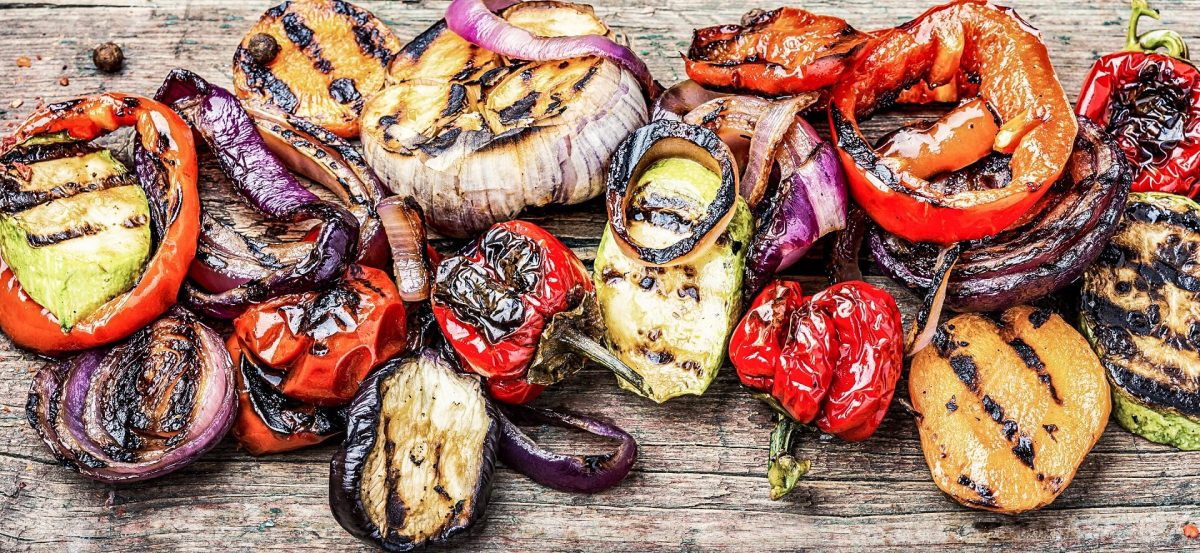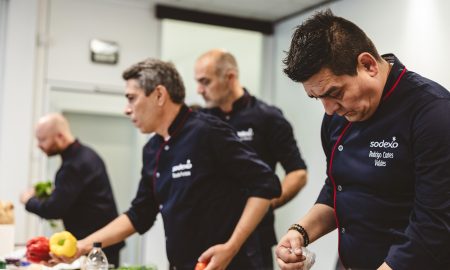Potatoes from the neighboring town, and meat from farmer Alois next door: When Matthias Tritsch went on holiday with his family in Allgäu in 2015, he noticed that the menus in the restaurants often included much more information than those in his native Lower Saxony. “Wherever we ate, there was always a long list of producers at the bottom of the menu.” Tritsch, a graphic artist who also loves to cook, got to thinking. When shopping, he was guided by designations of origin and seals, but in restaurants, he didn’t have this kind of guidance. Back in Lüneburg, he spoke to a friend, chef and hotelier Marcus Ramster. He was a member of a regional food culture association, but its influence scarcely reached beyond the Lüneburg Heath. “We asked ourselves: Shouldn’t it be possible to take something like this nationwide?”
In the same year, Tritsch and Ramster founded the Greentable association, a non-profit initiative for more sustainability in the gastronomy industry. Their goal: Creating more visibility for restaurants that are committed to the environment, climate and their employees through a custom seal. And there are quite a lot of them, according to Tritsch. However, in many cases their owners are not good at communicating their commitment. The Greentable seal is designed to help them achieve exactly this.
Diet? Increasingly a question of mindset
With a growing demand for organic food, more vegetarians, and an increase concern for animal welfare and human rights, diet has become a mindset stance in Germany. In a recent study conducted by the Otto Group, 70 percent of Germans stated that ethical criteria are now an integral part of their consumer choices. The coronavirus crisis has intensified this trend. People cooked more, and often used organic products. In the pandemic year 2020, Germans spent over 20 percent more money on organic food and drinks than in the previous year. The gastronomy sector must also respond to the fact that its guests will want to enjoy their food more sustainably in the future.
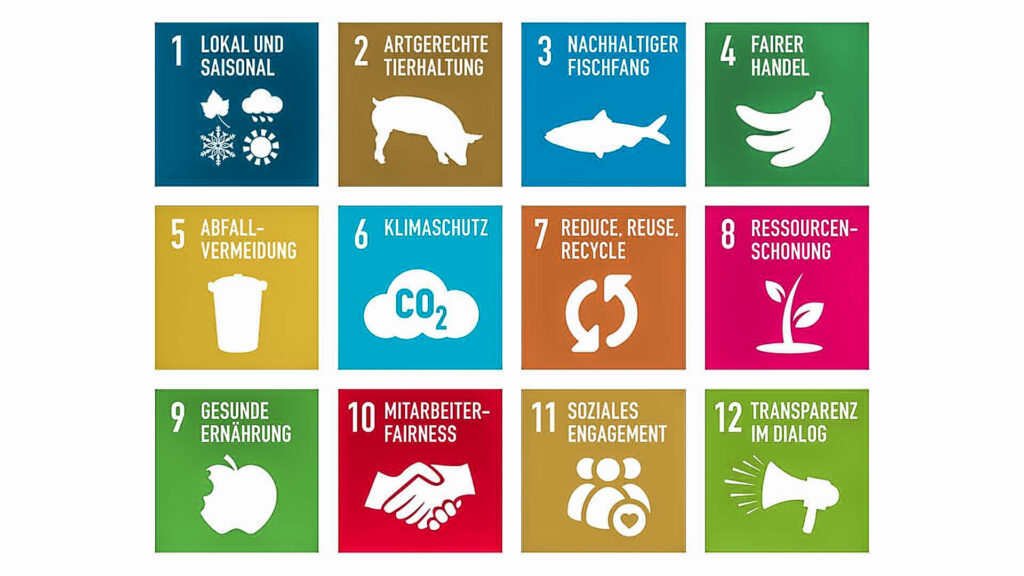
Image: Greentable
- Local and seasonal
- Species-appropriate livestock farming
- Sustainable fishing
- Fair trade
- Waste prevention
- Climate protection
- Reduce, reuse, recycle
- Resource conservation
- Healthy diet
- Employee fairness
- Social commitment
- Transparency in dialogue
Some of the seals familiar from trade are also available for restaurants: The green framed organic hexagon for German products from organic agriculture, for example, or logos from the growing associations Demeter and Bioland. However, these symbol only represent organic food, not whether a company uses green electricity or pays its people fair wages, for example. But these are important aspects, says Matthias Tritsch. His association is therefore guided by the United Nations’ 17 Sustainable Development Goals. Topics such as renewable energies or responsible consumption do not stand alone in the UN agenda, but rather intertwine. This is a holistic approach that Tritsch would also like to see in German gastronomy.
Twelve sustainability criteria
Restaurant owners who request to join Greentable receive an application for membership. It asks for twelve criteria that were developed together with the WWF and the Institute for Sustainable Nutrition (iSuN) of the Münster University of Applied Sciences. Vegetarian options on the menu are just as much a part of this as waste prevention or tap water as a mineral water alternative. A gastronomy establishment must meet at least six of these criteria. If they also accept the association’s code of conduct, they are entitled to display the association’s seal for an annual fee, receive promotional materials as well as benefit from the association’s public relations work and social media presence.
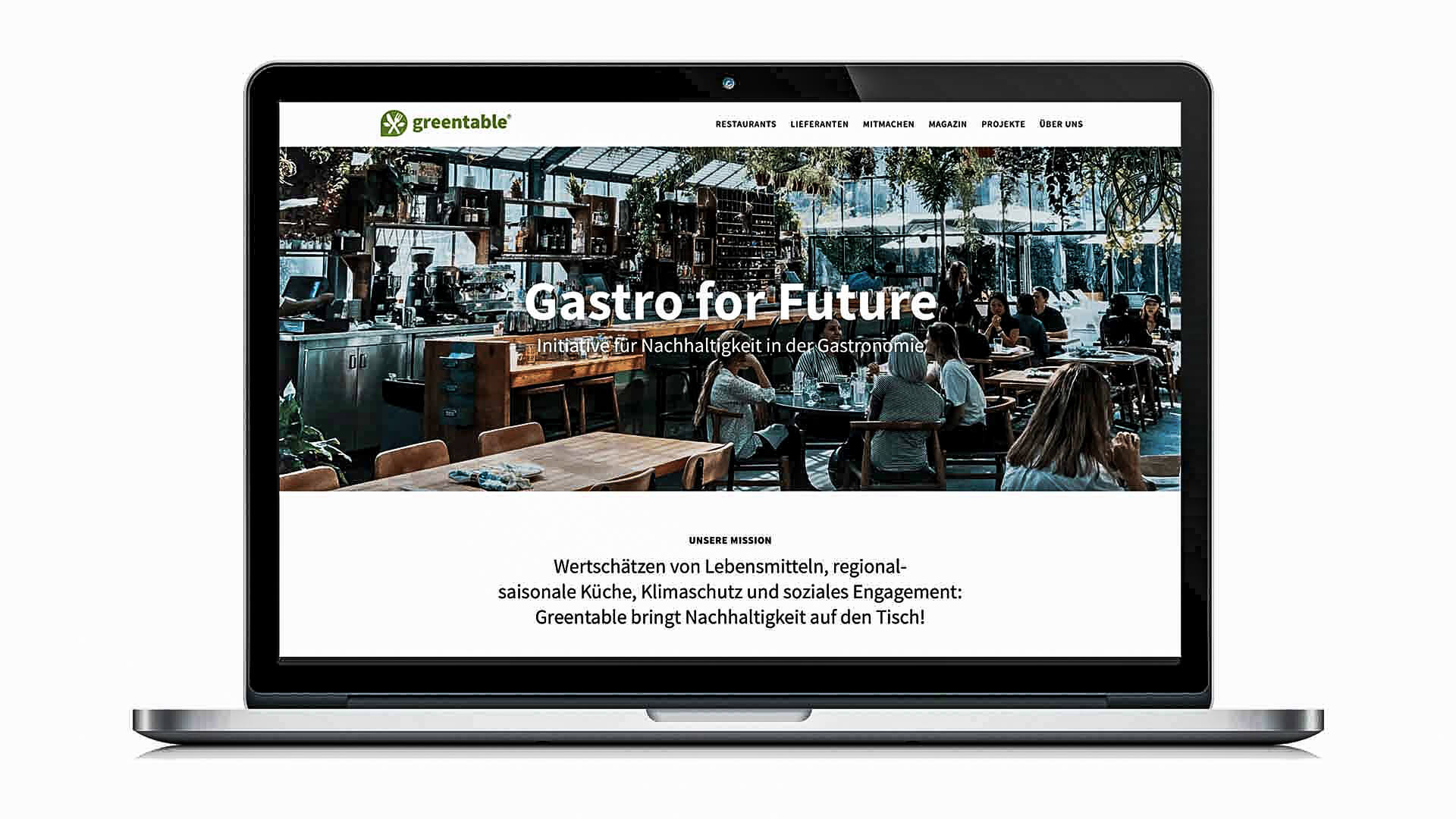
Image: Greentable
As a rule, it is Matthias Tritsch himself who checks the documents received to ensure that they are complete and the information is valid. In the six years the association has been running, he has only had to turn down two businesses: a restaurant whose menu included an absurd number of dishes and a wholesale chain that didn’t meet enough criteria, he says. So far, no member has ever become disqualified. However, if a guest contacts him with a relevant comments or the establishment’s social media makes it clear it is not adhering to the sustainability agreement, he will demand that improvements be made, says Tritsch. “We also have some freelancers who randomly check out restaurants when they’re in the area.” To date, the association has not earned enough money to employ permanent employees: they only make around 20,000 euros per year. This is another reason why the seal is just an award and not a certification, as the founder of the association emphasises.
Raising awareness of sustainability
Providing certification means that inspectors visit each participating restaurant and check everything from purchasing to storage – and that’s pricey. For example, the EarthCheck seal from Australia, which evaluates hotels as well as restaurants, costs 3,000 euros every two years. Anyone wishing to introduce the globally recognized environmental management system standard ISO 14001 should also expect to invest several thousand euros. In addition, you also need to take into account the time required for submitting applications and continuously documenting the measures agreed upon. If a restaurant wants to print the organic seal next to a dish on the menu, it must be able to prove the origin of processed ingredients. If conventionally produced products also come into the pots at the establishment, they must be clearly labeled and stored separately.
“This is too bureaucratic and expensive, especially for smaller establishments,” says Matthias Tritsch. With a contribution of 60 to 180 euros per year and a one-off admission fee of 100 euros, the costs for the seal are comparatively moderate. Anyone applying for a Greentable award does not have to change anything about storage, nor do they have to fear any unannounced checks. Instead of following a strict approach, as is the case with hygiene regulations or other legal requirements, Greentable relies primarily on the goodwill and commitment of its participating restaurants. If someone really doesn’t care about sustainability, they don’t even bother applying in the first place rather than cheating afterwards – Tritsch’s assessment is most likely right in this case.
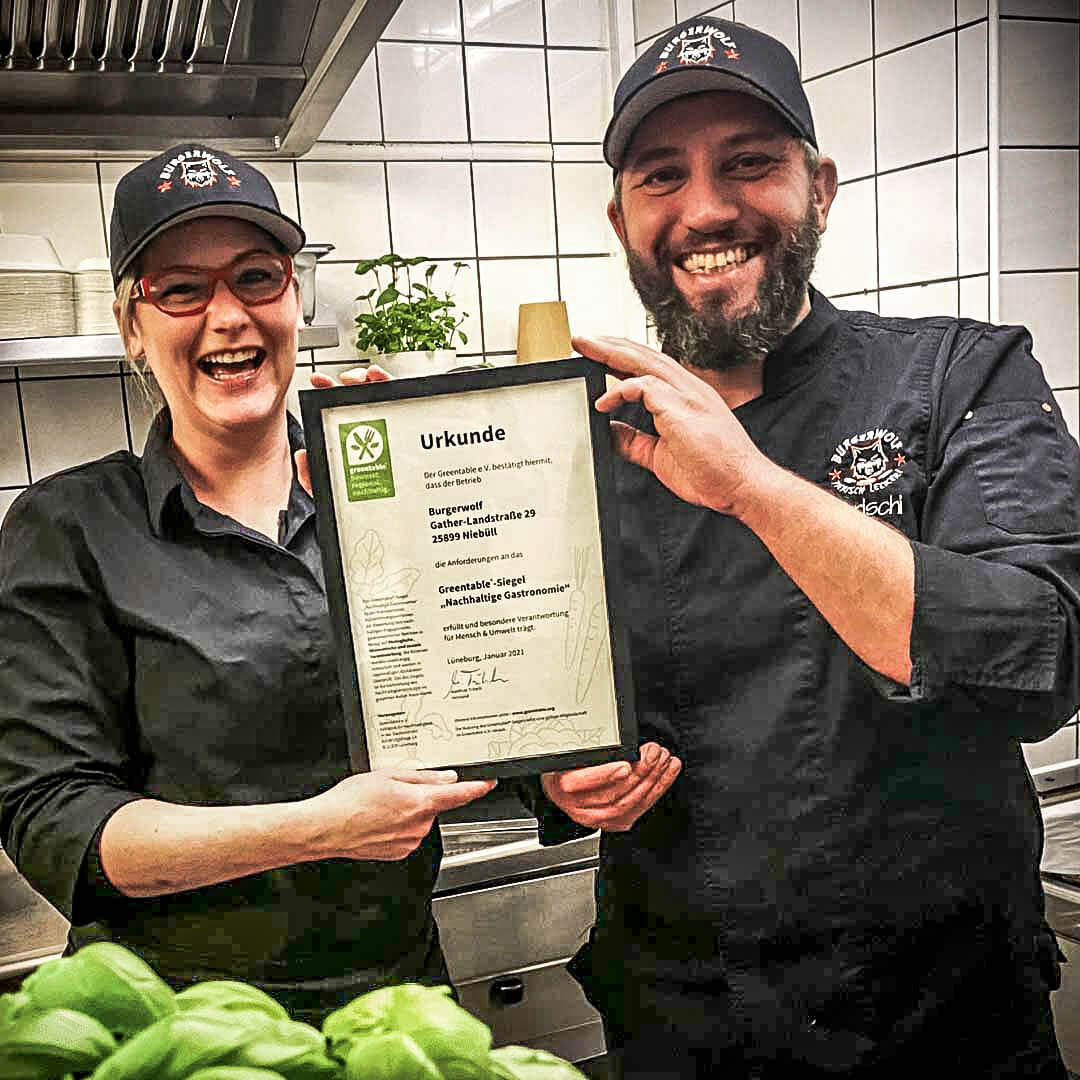
Image: Greentable: Christian und Steffi Wolf (Burgerwolf)
Most certificate providers often struggle to find companies that are willing to participate at all. Bioland, for example, lists 160 partners from the gastronomy, hotel and catering sectors. Demeter has started ten establishments so far. Greentable currently has 230 restaurants and suppliers among its partners. A kiosk in the Eifel is among them, along with a well-known Berlin star restaurant, an organic bistro in Mecklenburg-Western Pomerania, several cafeterias and company canteens as well as the restaurants in a burger chain. Although these companies may operate in very different ways, thanks to the seal, they all appear equally “green” to potential guests right away. This is because Greentable gives equal weight to each of its twelve criteria. For example, tap water on the menu contributes just as much to the achieving the required six points as using 100% renewable electricity.
Organic is not a must
Anyone who wants to know more precisely what makes a respective company sustainable must take a look at the association’s website. Tritsch knows that the balance is not optimal. “When we started with the seal in 2015, we still had 67 criteria,” he says. However, it is too complicated for the restaurateurs to work through them. “After one year, we only had ten members.” Tritsch opted for downsizing.
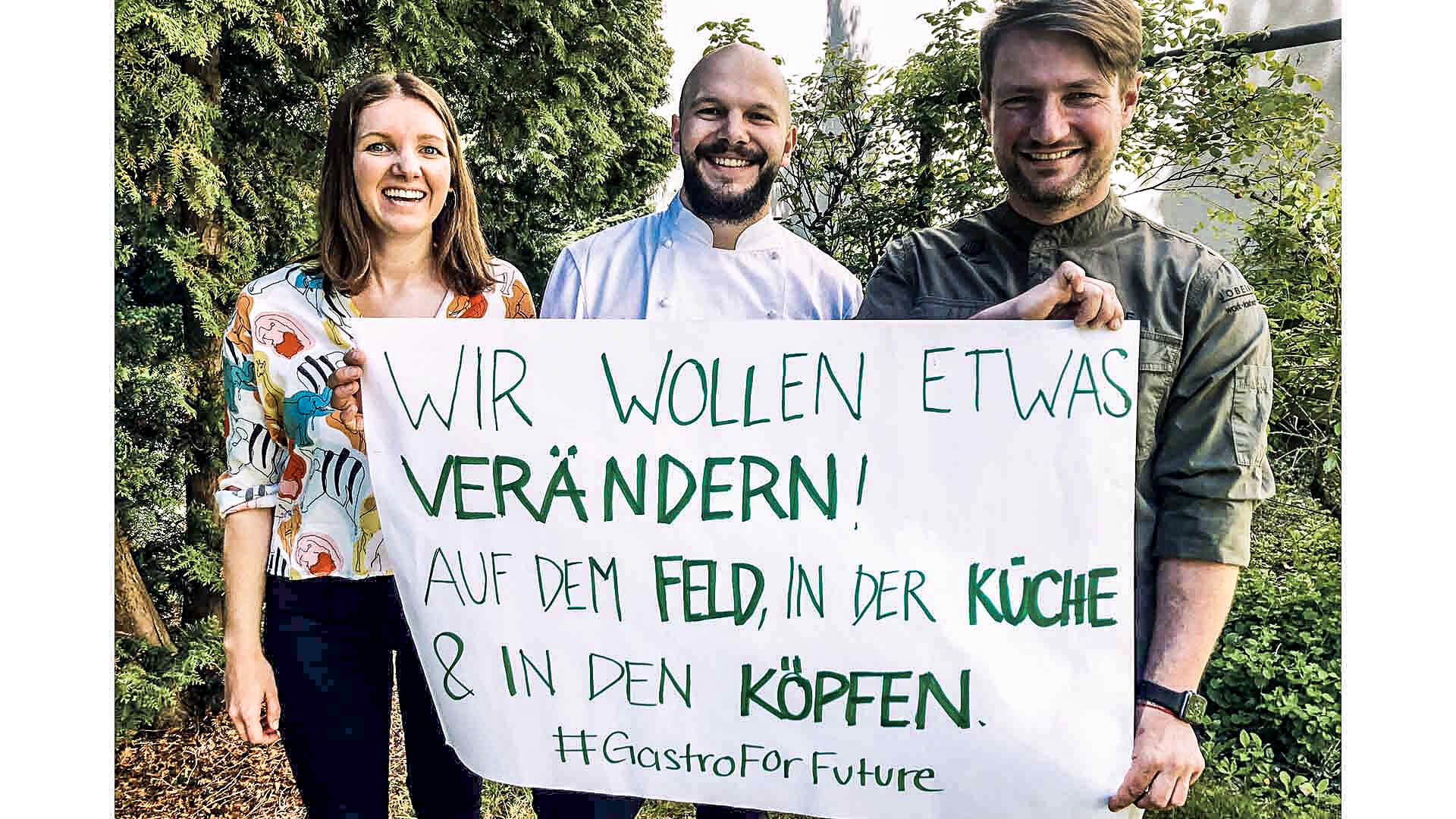
Image: Greentable: Friederike Gaedke (Die Gemeinschaft e.V.), Micha Schäfer (Nobelhart und Schmutzig), Sebastian Frank (Horvath)
Some guests also might not realize that a restaurant with a Greentable seal does not necessarily serve organic food. While Bistrot in Mecklenburg-Western Pomerania, for example, is certified organic and is committed to obtaining at least 30 percent of ingredients from organic farming, the burger chain member uses “mainly regional and seasonal products” according to one of its press releases. Buying organic products often costs more; in many cases, they are better for the environment than conventional products since they are grown with less pesticides, more sustainable land management and greater biodiversity. However, Tritsch does not want to make organic ingredients a prerequisite for the seal. “Some restaurants use mostly organically grown products, but not ones that have an organic seal.” For example, this might be lettuce from their own garden, or even products from farms that take environmental protection very seriously but are still not officially certified.
The main goal: good, healthy food
In addition to organic products, there has been another consumer trend for several years now: going regional. At Greentable, restaurants whose ingredients are at least 50 percent seasonal and locally sourced can earn points. However, “local” is a flexible term. Short delivery routes are initially good for the climate, but a regional steak can also come from a nearby industrial meat factory. Matthias Tritsch admits that regionality is not an optimal criterion.
He does not rule out the possibility that the Greentable evaluation will be adjusted again in the future. “We continually discuss the criteria all the time.” First and foremost, he said, his aim is to raise awareness among the gastronomy industry of the need for greater sustainability. Although this is always among the top issues for gastronomy businesses, it is usually only in second or third place. “Sometimes the new hygiene regulation comes first, then the ban on single-use plastic or the shortage of skilled workers – and now Corona.”
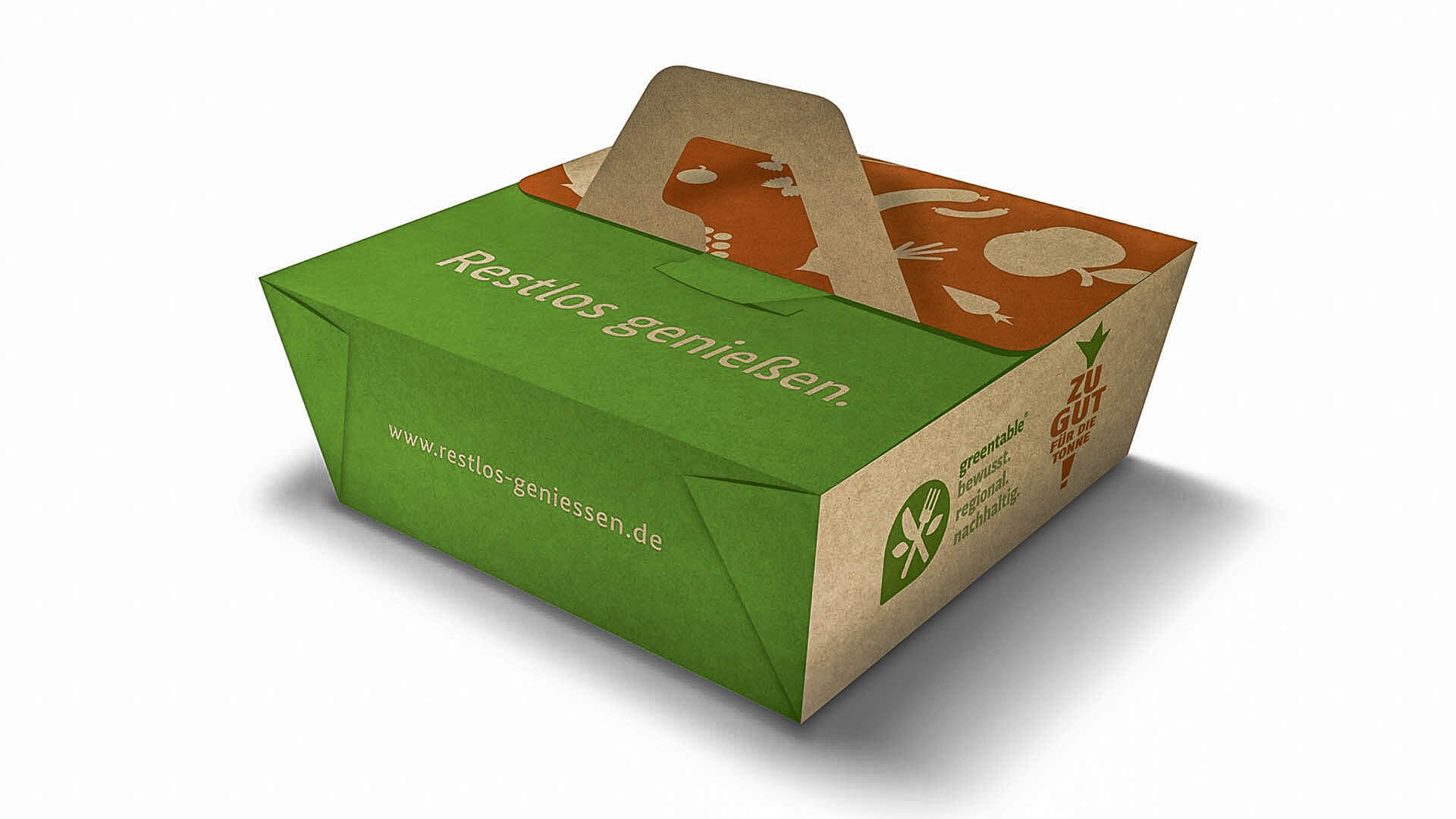
Image: Greentable
Greentable therefore strives to lead the way with its own projects. Since 2015, for example, the association has been helping restaurants reduce waste with the Beste-Reste-Box, an ecological packaging for leftovers that it helped develop. In September, he also launched the German spin-off of the US Zero Foodprint initiative: Participating restaurants increase the prices of their dishes by one percent. The initiative then uses the additional money raised in this way to support regenerative agriculture – for example with mobile poultry houses or trees for agroforests that protect the soil between the fields from drying out and erosion. “Whilst organic farming primarily aims at conservation, regenerative practices aim at improvement and reconstruction. Thus, with the help of regenerative agriculture, soils should be improved, and biodiversity increased, and therefore managed in a cause-related manner instead of purely combating symptoms,” says Tritsch.


